Decision at Sea: The Difficulty of Turning Fleet Actions into Strategic Victory
It is no surprise, given the time and expense of outfitting a fleet, that large-scale battles are far rarer at sea than on land. A survey of the great Anglo-French naval rivalry illustrates the point: between 1688 and 1815, the two countries fought seven major wars amidst wider conflicts in Europe and North America. Whereas all of these wars witnessed over a dozen major clashes between armies, most only saw one or two general actions at sea.
What is surprising is how little these battles influenced the larger course of events. The period began with France as the greatest among European naval powers, and ended with Britain the unchallenged master of the world’s oceans. It is tempting to look to such resounding victories as Trafalgar or Quiberon Bay for an explanation; closer examination reveals those battles to be more result than cause of the British victory.
The Dynastic Wars
The first episode of the Anglo-French rivalry was the Nine Years’ War, which was also among the most active. The war at sea began in 1689, with a clash off the Irish coast between squadrons numbering around 20 ships each. This was followed by two much larger battles in 1690 and 1692, between fleets ranging from 44 to 82 ships-of-the-line: Beachy Head went in favor of the French, Barfleur to the favor of the Anglo-Dutch allies. Although losses were substantial in both (a combined total of 17 ships-of-the-line at Barfleur), neither battle significantly directly altered the naval balance of power. Their greatest effect was to persuade Louis XIV to abandon the maritime war amidst the mounting costs of operations on land—nevertheless, the French fleet combined a final time to attack an Anglo-Dutch convoy off Portugal in 1693. Although not quite a general fleet action, it saw roughly 70 French ships attacking the allies’ 20-ship escort.
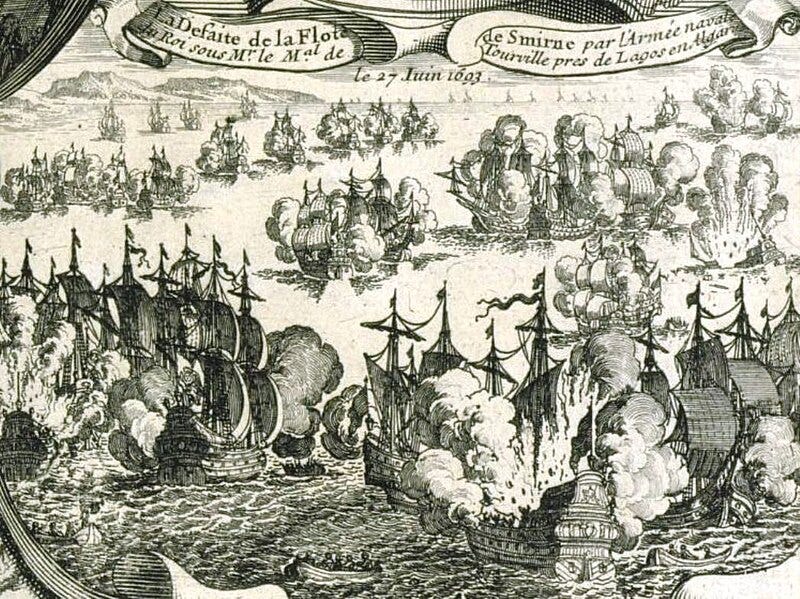
By the outbreak of the War of the Spanish Succession in 1702, French naval strength had further declined in the face of mounting war debts. They committed to a single large action off Vélez-Málaga, fought by fleets of 50+ ships-of-the-line: both sides endured severe damage but neither lost a ship, with the French coming out somewhat better. They were left in no position to profit, however, and their fleet remained mostly inactive for the duration of the war.
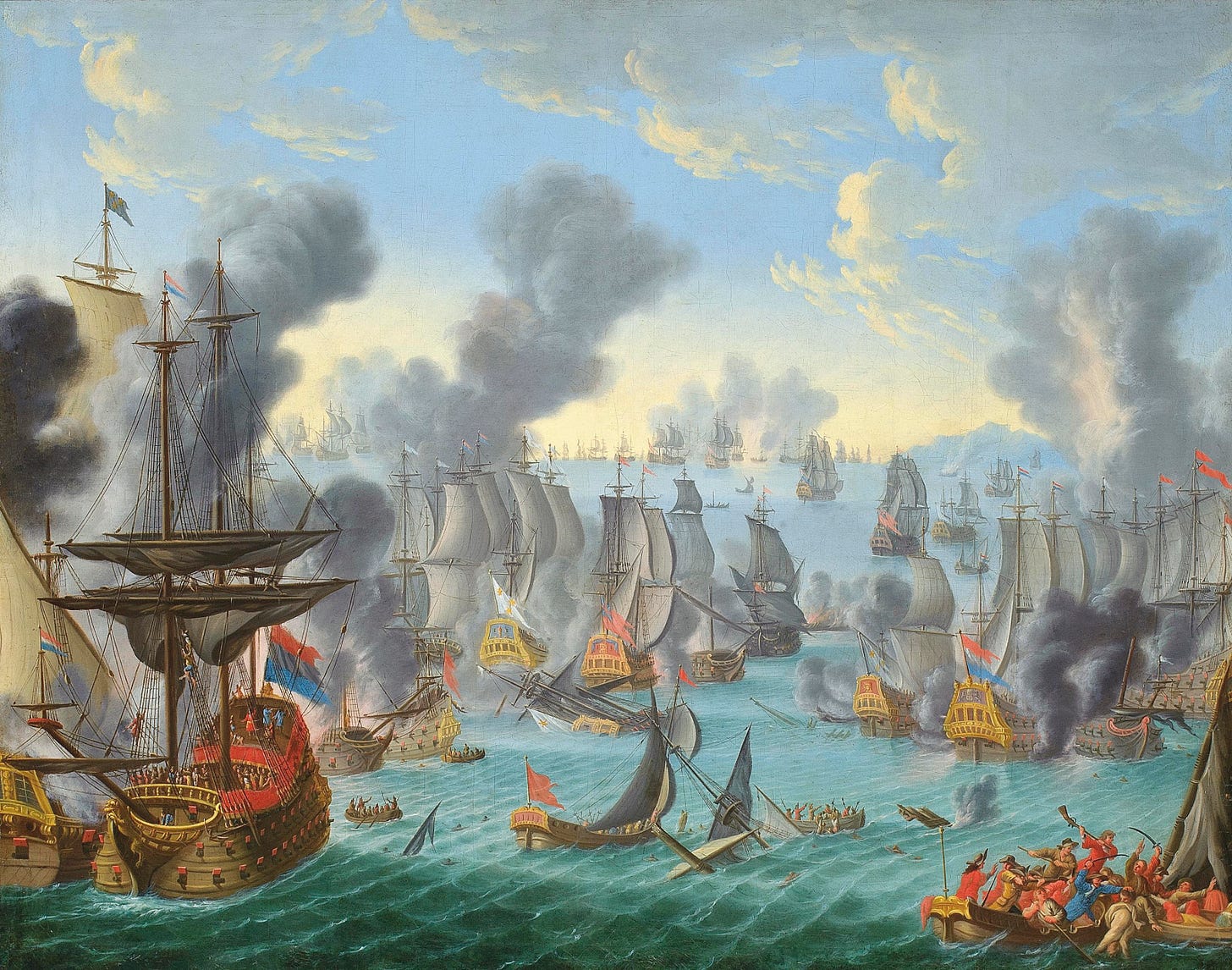
The dynamics change considerably in the mid-18th century. Louis XIV’s large war fleet declined precipitously after his death, as the regency attempted to salvage the kingdom’s finances. This left them unable to seriously contest the waves in 1744, when hostilities erupted with Britain amidst the wider War of the Austrian Succession. The single general action was a decidedly smaller affair: a Franco-Spanish fleet of about 30 ships sailed out of Toulon, where it had been blockaded by a British fleet of equal size, losing only a single ship-of-the-line as a result. All other major actions at sea consisted of smaller actions or British attacks on allied convoys, in which the destruction of escorting ships gradually eroded French strength.
This pattern repeated itself in the Seven Years’ War. The war commenced with a general action between the two countries’ Mediterranean squadrons, which amounted to just 12 ships a side—a substantial share of France’s overall naval strength but a small share of Britain’s. Although the former drove off the latter, neither lost a ship and the victory only served immediate objectives on land. The only large battle of that war, at Quiberon Bay in 1759, was a hazardous pursuit during a storm, not a true general action, and resulted in the destruction or capture of much of the French fleet.
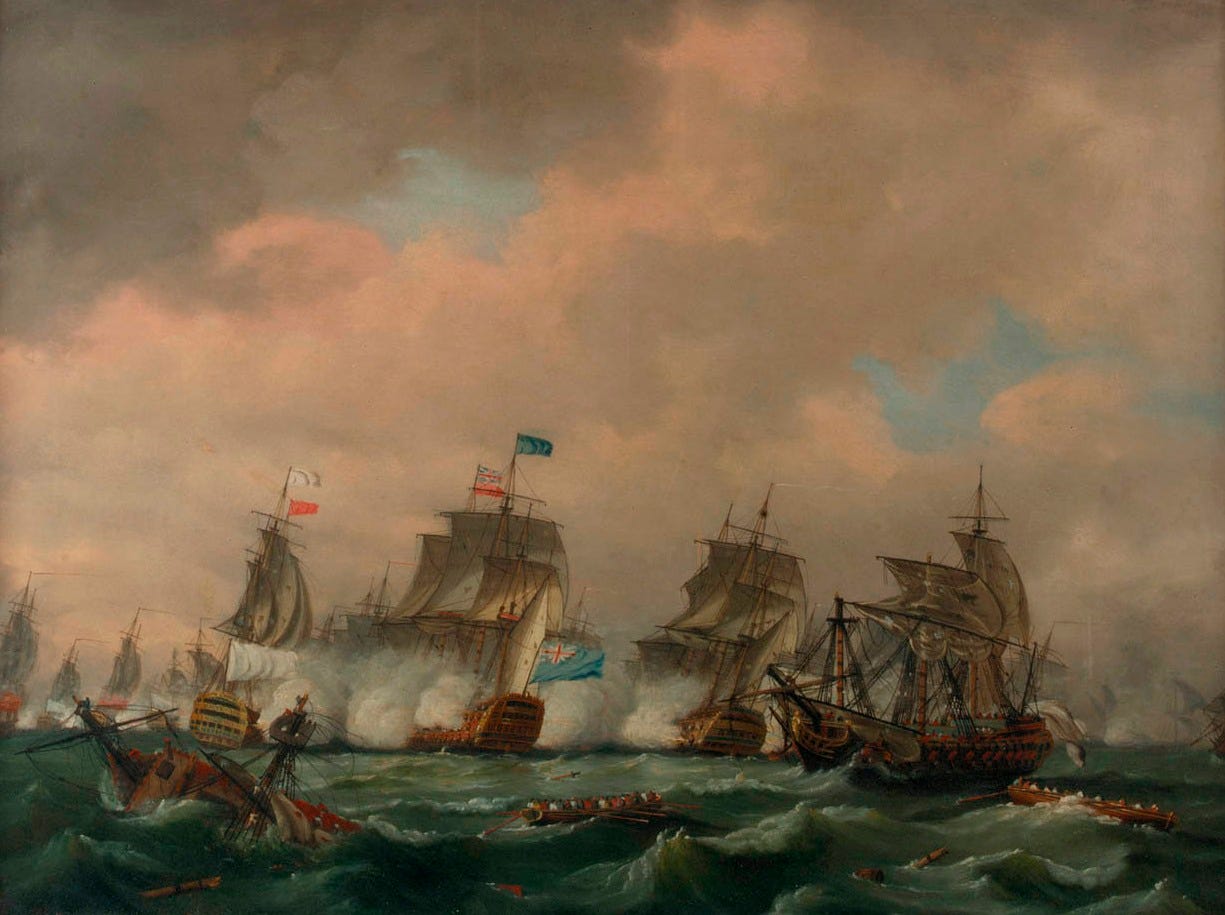
Decisive Battle at Sea
The wars of Louis XIV and XV were above all continental wars. Major sea battles were fought primarily to shape land operations, and it is by that standard that we may evaluate their decisiveness. The first battle of the Nine Years’ War allowed the French to land troops in Ireland, while their failure to destroy the Anglo-Dutch fleet in the next two (despite winning a tactical victory in one) foreclosed an invasion of England. The indecisive Battle of Vélez-Málaga prevented the relief of the recently-captured Gibraltar, an outcome that had great strategic repercussions in the following centuries. The British failure to destroy the combined Bourbon fleet off Toulon allowed the latter to resupply their forces in Italy, while the tactically-indecisive battle off Menorca allowed the French to capture that island. Finally, the Battle of Quiberon Bay broke up the fleet that was to escort an invasion force across the English Channel.
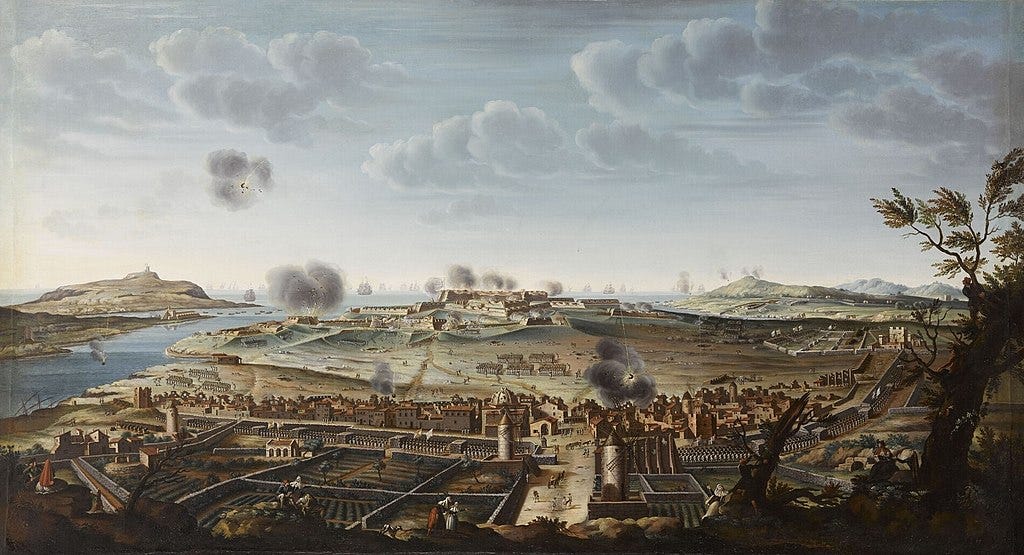
What does this say about the use of naval power for control of the sea? Of all the battles mentioned, only Quiberon Bay noticeably altered the balance of power. This, however, was only because the French navy was already so far reduced: even counting ships that were temporarily blockaded in the aftermath, only 13 French ships were lost or neutralized, fewer than the 15 destroyed at Barfleur. The real cause of French decline occurred during peacetime, when massive debts from continental wars led to neglect of the fleet. This was exacerbated by cumulative losses in smaller actions, to which Quiberon Bay was merely the coup de grâce.
Securing Sea Control
Very different dynamics were at play in the later Revolutionary and Napoleonic wars. During the period from 1793 to 1815, Britain was France’s most persistent enemy, fighting two long conflicts. The first of these spanned the Wars of the First and Second Coalition, and lasted until 1802; the second from 1803 onward. Britain was by this point decidedly the greatest sea power, while the French navy—although much stronger than it had been mid-century—was hobbled by the purges of its officers during the Revolution.
As such, the Republican government was reluctant to commit it to any great actions. Only two approached the size of earlier battles. On the Glorious First of June 1794, a 25-ship British squadron captured or destroyed 7 of 26 French ships protecting a convoy. The following year, a 23-ship squadron repelled 19 French ships-of-the-line from escaping the blockade of Toulon, although most ships on either side did not engage. The only decisive naval engagement, from the perspective of either land or sea, was much smaller: in 1798 the British destroyed 11 of 13 French ships-of-the-line at the Battle of the Nile, stranding Napoleon’s army in Egypt and destroying France’s naval strength in the Mediterranean.
Most encounters in the war were single-ship actions or between small cruising squadrons. The Royal Navy further consolidated its mastery of the sea by attacking actual or potential French allies: Spanish and Dutch squadrons in 1797, and the Danish fleet at harbor in 1801. Dutch and Danish naval power was almost entirely destroyed as a result, while the Spanish suffered only modest losses.
By the end of this first period, the number of French ships was considerably reduced through attrition and wastage. Napoleon attempted reforms beginning in 1801, but seamanship remained a critical weakness at the outbreak of the second war. Other than an inconclusive battle between two modest forces (15 British against 20 French and Spanish), the only large fleet action of this period was fought at Trafalgar in 1805. 27 British ships captured or destroyed 18 of 33 French and Spanish ships and captured the French admiral. This did not have quite the effect on land operations as anticipated—Napoleon had already cancelled his planned invasion of Britain—but it conclusively eliminated Imperial France as a naval threat.
The Sea as the Primary Theater
The maritime ambitions of Louis XV and Napoleon ended the same way: with superior British seamanship finishing off a navy weakened by domestic policy decisions. This reflected a general turn by France away from the sea which began under Louis XIV, following his navy’s failure to win a decisive victory early in the Nine Years’ War.
But in between these two periods stood a great exception: the American War of Independence. Following France’s defeat in the Seven Years’ War, her government undertook a massive rebuilding of the navy. This allowed her to enter the war between Britain and the Thirteen Colonies in 1778, joined the following year by Spain. Over the course of hostilities, the British fought a total of six general actions against the Franco-Spanish allies in which both sides had at least 19 ships-of-the-line: Ushant (29 vs. 30), Grenada (25 vs. 21), Martinique (20 vs. 23), the Chesapeake (19 vs. 24), St. Kitts (22 vs. 29), and the Saintes (36 vs. 30). In the Indian Ocean, where neither side could project much naval power, smaller British and French squadrons also fought a series of battles ranging from 9 to 18 ships-of-the-line a side.
Two things stand out in this war. The first is that both sides conceived of it primarily as a naval conflict. Although all belligerents committed substantial land forces to North America and other theaters, these numbers paled in comparison to earlier dynastic wars and the Revolutionary period. As such, only the Battle of the Chesapeake—which blocked reinforcements to the beleaguered Yorktown garrison—was fought primarily in support of a land campaign. Several battles in the Caribbean were fought over coveted island colonies, but their immediate objective was to gain useful harbors, in recognition of the fact that sea control was essential for their war aims.
The second point is that it was very difficult to obtain any kind of decision even between willing opponents. The Saintes was the most tactically conclusive battle of the war, in which the French lost 5 ships and saw their admiral captured; while this made them less active at sea, it did not complete upend the naval balance.
These same dynamics were at play in the smaller contest for the Indian Ocean. Tactically speaking, all five major battles were inconclusive—neither side lost a single ship—but one side or the other was frequently forced to draw off, allowing the adversary to land troops or raise sieges. These land operations were concerned entirely with gaining naval bases—their focus was on the destruction of the British squadron before any territorial acquisition.
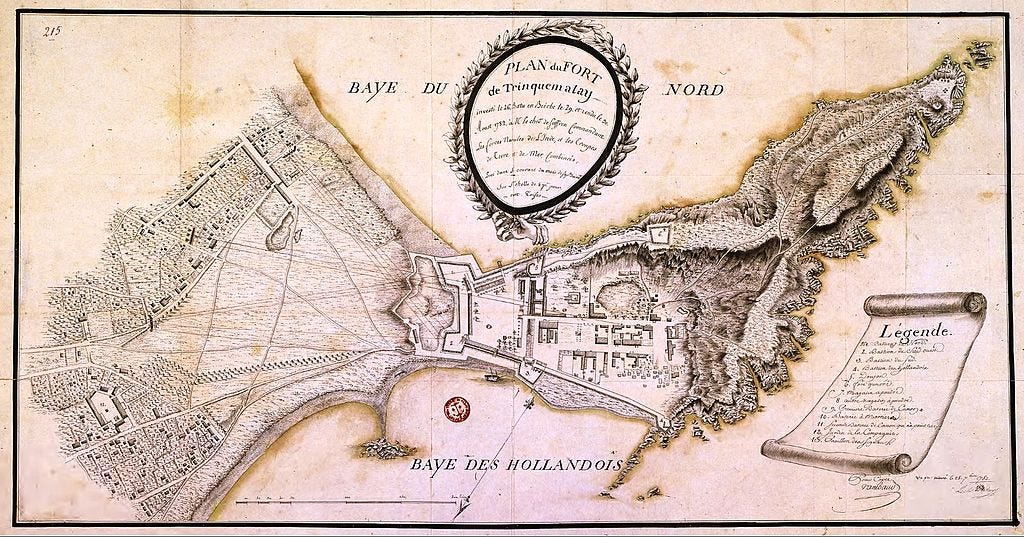
The Twentieth Century
The long Anglo-French naval rivalry was preceded by a general period of intense maritime warfare—the Spanish, the Dutch, and other several peripheral powers had been very active in the preceding centuries—but no such period followed it. Trafalgar ushered in a Pax Britannica, and one has to look an entire century after it to find a naval war of comparable size.
That came in 1904, when war erupted between Russia and Japan. Hostilities lasted just over a year, and consisted of parallel land and sea campaigns which only slightly overlapped (at the siege of Port Arthur). Both ended in remarkable Japanese victories, and both heralded new ways of warfare (the land campaign prefigured the rail-bound operations of WWI), but it was the naval war that captured the world’s imagination.
The overwhelming Japanese victory at Tsushima Strait, fought after two inconclusive engagements over the previous year, inaugurated the age of the battleship. It was a truly decisive battle, in which the Japanese destroyed the Russian Far East fleet. In a stroke, they made themselves the unquestioned naval hegemon in the western Pacific, a truly unprecedented achievement for a single battle. The pivotal role of Japanese gunnery spurred Western powers to develop larger and better-armed ships of their own, as they feared falling victim to a similar fleet.
Tsushima set many false expectations. Perversely, it was also the only war in which the battleship played a decisive role, and remains the sole example since the Age of Sail in which the naval balance was shifted so drastically with a single battle. Indeed, it is striking how quickly naval warfare reverted to the mean. The British and German fleets met eleven years later at Jutland, the sole general engagement of World War I. Neither side was willing to press the attack. This was more for reasons of strategy than anything else: the British did not want to give the Germans a chance to break their blockade, while the Germans could not risk a defeat that would leave their coast exposed. As such, the maritime theater played an indirect, albeit important, role as the Allies capitalized on the Royal Navy’s preponderance to strangle the Central Powers’ economy.
In view of all this, the Pacific Theater of World War II appears all the more remarkable, defying every precedent of the previous 250 years. Both sides fought primarily for control of the naval domain, engaged in many general fleet actions, and fought several battles that decisively shaped the course of the war. This combined the strategic scale of the Anglo-French War of 1778-83 with the decisiveness of the Russo-Japanese War; the combat marked the last general fleet action in naval history and secured America’s maritime hegemony around the globe.
Decision in the Twenty-First Century
The Pacific War leaves us somewhat adrift when looking to the future. Although large-scale naval combat is comparatively rare in every age, our most recent example is eighty years old—and highly unusual by historical standards. It is always hard to predict when or where the next big war will take place, but it is even harder to guess what the nature of naval combat will look like.
Nevertheless, we can note some broad generalities. The actual employment of maritime power tends to revolve around land operations, which makes them inherently conservative in the employment of their fleets. When two powers do commit to fighting each other primarily at sea, modern technology tends to make combat more decisive. But barring such an aggressive campaign ends with one fleet at the bottom of the ocean, the long-term balance of power is determined more by peacetime buildups.
All eyes are currently on the US-China rivalry, which hinges more on sea control than on any impending land conflict: it is therefore reasonable to guess that any naval war between the two would be decisive indeed. But obvious flashpoints often fail to materialize, and instead drive developments elsewhere—the Indian Ocean, perhaps. But as unlikely as a large-scale conflict may be, its possibilities are wide indeed.
Thank you for reading the Bazaar of War. Most articles are free for all to read, but a subscription option is available to all who wish to support. Subscribers receive a pdf of the critical edition of the classic The Art of War in Italy: 1494-1529, and will have exclusive access to occasional pieces.
You can also support by purchasing Saladin the Strategist in paperback or Kindle format.

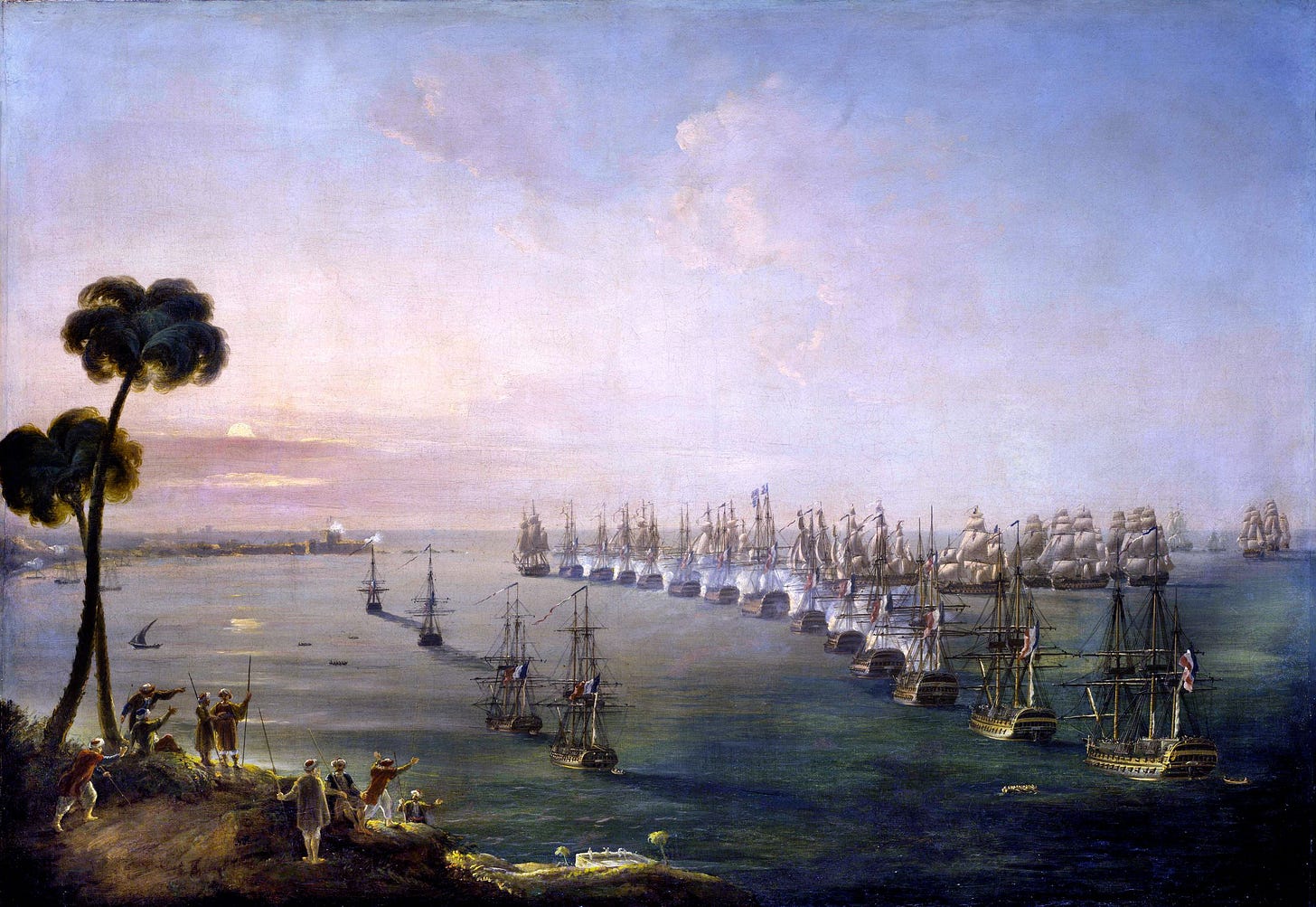

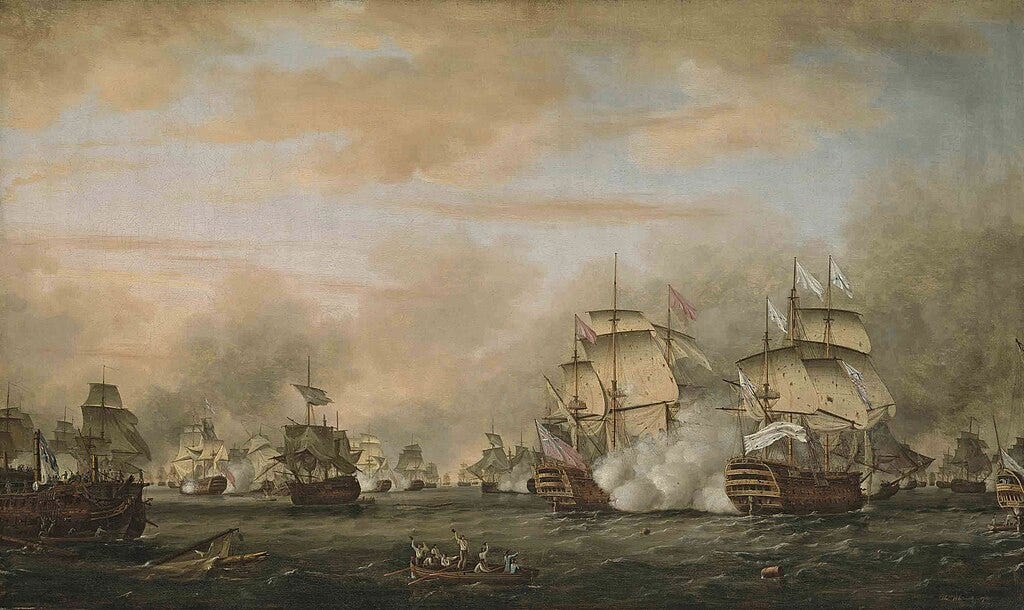
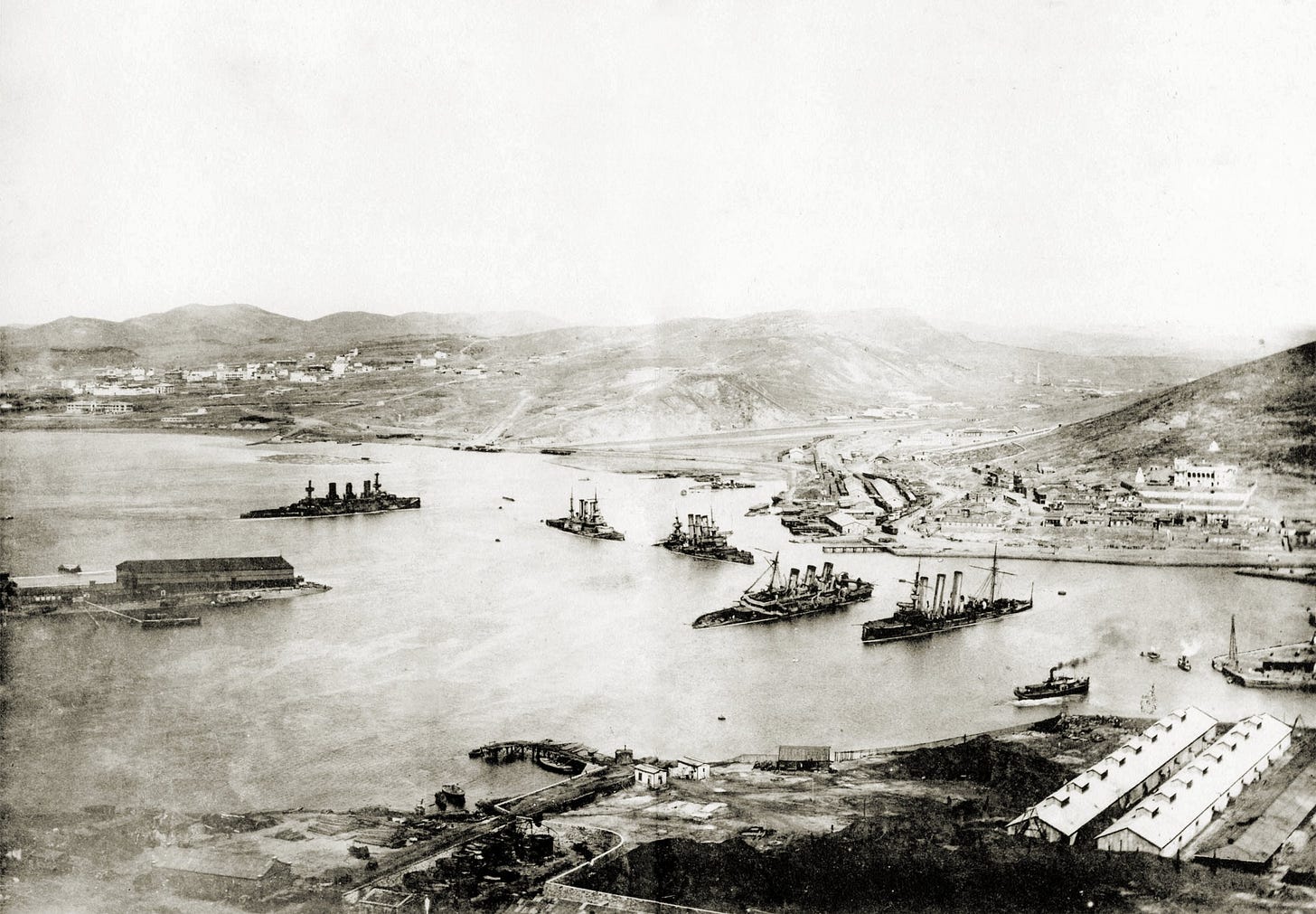
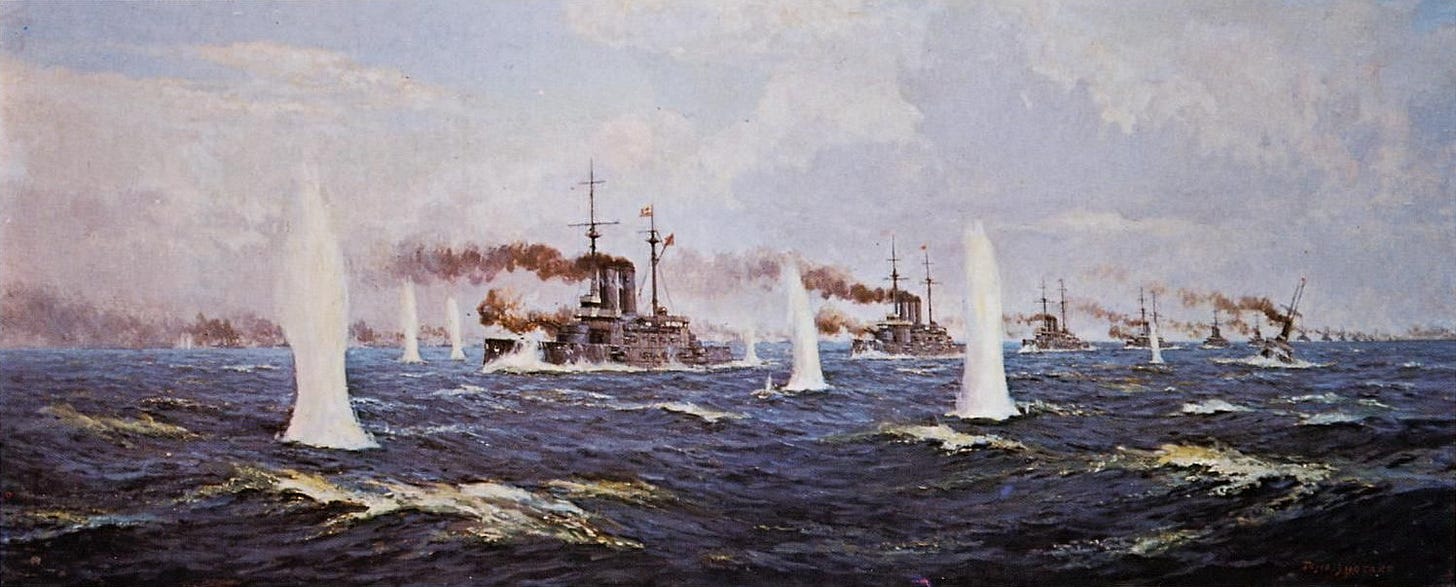
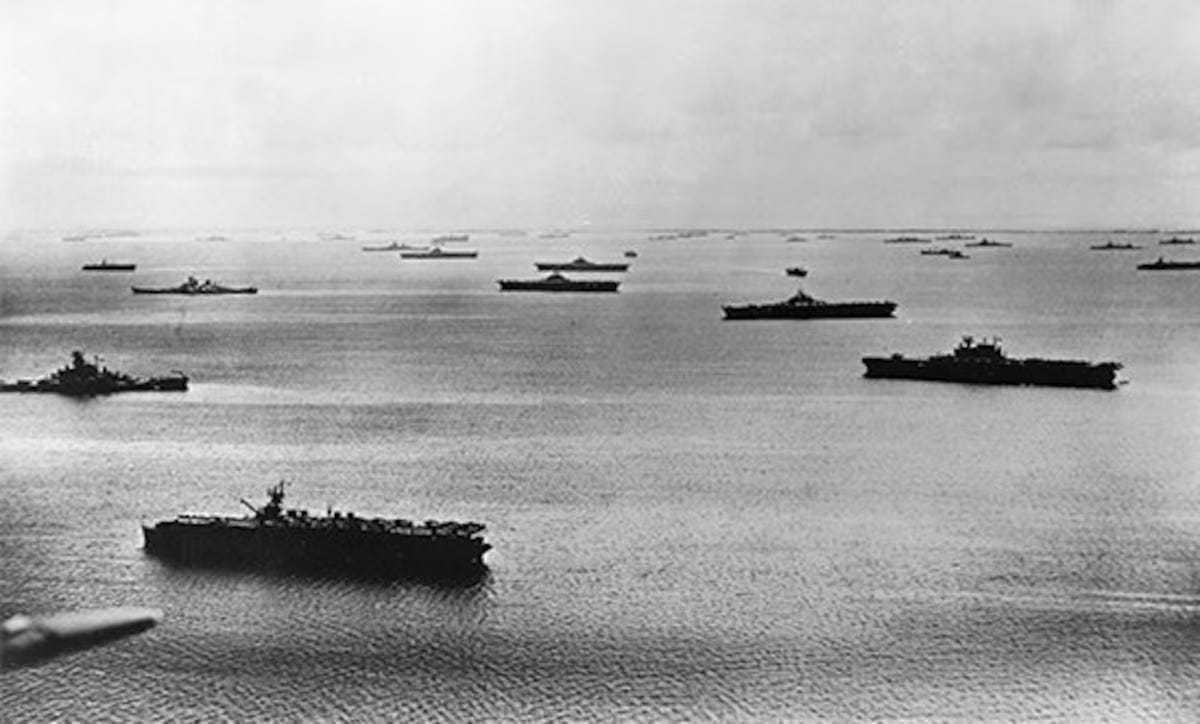
Julian Corbett said exactly this: that major battles are not the means of good strategy but the result.
Loved your article